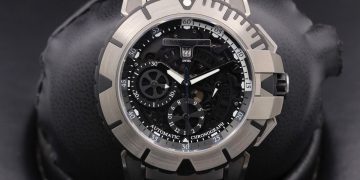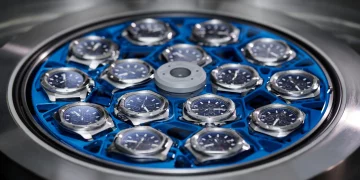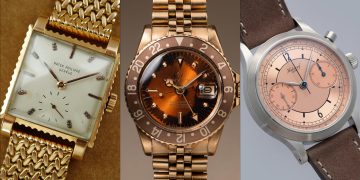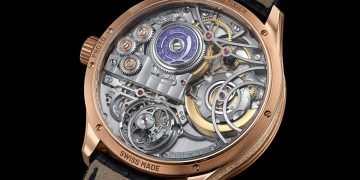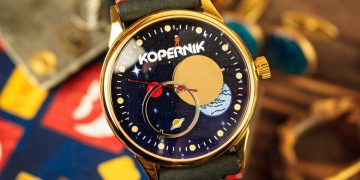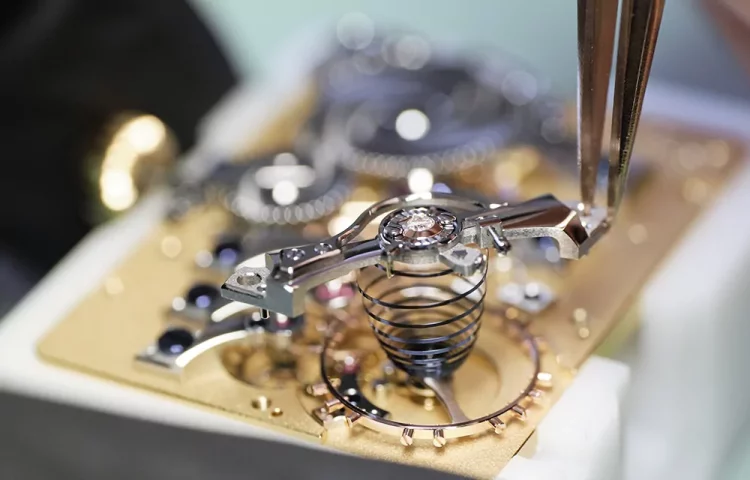When it comes to high-end timepieces, one of the most fundamental aspects of a watch is its movement—the intricate system that powers the timekeeping. Broadly speaking, watches are powered by either automatic movements or manual mechanical movements. While both fall under the category of mechanical watchmaking, there are distinct technical differences between the two, and understanding these differences can help enthusiasts choose the right timepiece for their needs.
In this article, we will explore the technical distinctions between automatic and manual mechanical movements, analyzing how these differences affect accuracy, durability, and overall lifespan. We will also discuss the implications for collectors, users, and those seeking precision in their watches.
1. Understanding Mechanical Movements: The Basics
Before delving into the specific differences between automatic and manual movements, it’s important to understand the general concept of mechanical movements. Both types operate without the need for a battery, relying instead on a system of gears, springs, and balance wheels to keep time.
- Manual Mechanical Movements: These require the user to wind the crown regularly to store energy in the mainspring, which then powers the movement. The mainspring unwinds gradually, transferring energy through a series of gears, ultimately driving the hands of the watch.
- Automatic Mechanical Movements: These also use a mainspring to store energy, but instead of requiring manual winding, they use a rotor—a small weight that moves with the natural motion of the wearer’s wrist. The rotor winds the mainspring as the wearer moves, powering the watch without needing manual intervention.
2. Automatic vs. Mechanical: The Technical Differences
Automatic Movements: The Self-Winding Mechanism
Automatic movements, also known as self-winding movements, are powered by the motion of the wearer’s wrist. The rotor inside the movement spins freely as the wearer moves, transferring energy to the mainspring, which then stores and releases power to drive the watch.
Key Components of Automatic Movements:
- Rotor: A semi-circular weight that rotates with the wearer’s movement.
- Winding Gear: A series of gears that transfer the energy from the rotor to the mainspring.
- Mainspring: A tightly wound spring that stores energy to power the watch.
How Automatic Movements Work:
As the wearer moves, the rotor spins, which causes the winding gears to wind the mainspring. The energy stored in the mainspring is released through the gear train, which drives the hands of the watch.
Advantages:
- Convenience: Automatic movements are powered by the user’s natural movement, meaning they don’t require manual winding if worn regularly. This makes them highly convenient for daily wear.
- Longer Power Reserve: Automatic movements often come with power reserves ranging from 24 to 72 hours, depending on the brand and the model. The power reserve is a measure of how long the watch can run when not worn, thanks to the stored energy in the mainspring.
Disadvantages:
- Sensitivity to Wear: Automatic movements can sometimes be sensitive to changes in wrist movement. If the wearer is very inactive or the watch is not worn for a few days, the movement can lose power, requiring either a manual wind or a few hours of wrist movement to wind the mainspring again.
- Complexity: The rotor and the winding system introduce additional moving parts into the mechanism, which can make the movement slightly more prone to wear over time.
Manual Movements: Precision with a Personal Touch
Manual mechanical movements, often considered the purest form of watchmaking, require the wearer to manually wind the watch. This process transfers energy to the mainspring, which then powers the watch. Unlike automatic movements, manual movements do not feature a rotor.
Key Components of Manual Movements:
- Mainspring: A tightly coiled spring that stores energy when wound.
- Gear Train: A system of gears that transfers energy from the mainspring to the hands of the watch.
- Balance Wheel: A small wheel that oscillates back and forth, controlling the release of energy from the mainspring.
How Manual Movements Work:
The wearer winds the crown, which tightens the mainspring. As the mainspring unwinds, energy is released through the gear train to move the hands. The balance wheel oscillates back and forth, regulating the release of energy to ensure consistent timekeeping.
Advantages:
- Simplicity: Manual movements have fewer moving parts than automatic movements, which can result in a more straightforward design and greater reliability.
- Accuracy: Because manual movements are not dependent on wrist motion, they often exhibit more precise timekeeping when properly wound. The absence of a rotor means fewer variables to interfere with accuracy.
- Watchmaker’s Craftsmanship: Many high-end manual movements are crafted by skilled watchmakers, offering a level of finely tuned craftsmanship that appeals to collectors. The user’s connection to the watch through manual winding also adds an element of personal involvement.
Disadvantages:
- Manual Winding Required: The primary downside of manual movements is that the wearer must wind the watch regularly, typically once every 24 to 48 hours, depending on the power reserve. If neglected, the watch will stop.
- Shorter Power Reserve: Manual movements tend to have shorter power reserves than automatic movements, with most offering around 40 to 50 hours of runtime before requiring a wind.

3. Accuracy and Precision: How Each Movement Affects Timekeeping
Automatic Movements and Accuracy
Automatic movements are generally known for their solid accuracy, but they can sometimes experience slight deviations due to the additional parts involved in the rotor and winding mechanism. The rotor’s motion can cause the movement to be slightly less accurate compared to a manual winding system, especially if the wearer’s wrist motion isn’t consistent.
- Factors Affecting Accuracy: The overall accuracy of automatic movements depends on how well-calibrated the rotor system is, along with the quality of the components in the movement. High-end automatic watches with superior movements often provide more precise timekeeping.
- Impact of Power Reserve: The longer the power reserve, the more likely the watch is to experience small deviations in accuracy as the stored energy decreases. Worn daily, automatic watches generally maintain a steady accuracy.
Manual Movements and Accuracy
Manual movements, by design, can offer more consistent timekeeping. Without the rotor mechanism, manual watches can be built with a simpler gear train and balance wheel, which results in fewer variables that could affect precision.
- Consistency: A well-wound manual movement can be more accurate than an automatic watch, as it doesn’t depend on external factors like wrist movement. Once wound, it operates consistently until the mainspring energy is depleted.
- Fine-Tuning: Manual movements are often regarded as being more finely tuned, with many high-end manufacturers taking great care in calibrating the regulation system for optimal performance.
4. Longevity and Durability: Which Movement Lasts Longer?
Durability of Automatic Movements
Automatic movements are inherently more complex than manual movements due to the addition of the rotor and winding gears. While they are designed to be durable, the increased number of moving parts can sometimes lead to more wear and tear over time, particularly if the watch isn’t worn regularly.
- Wear and Tear: The rotor mechanism is a moving part that can experience friction and wear, especially if the watch is wound too tightly or the wearer’s wrist movements aren’t sufficient.
- Maintenance: Automatic watches generally require more maintenance to keep the rotor system functioning smoothly. This can include lubrication and calibration, which need to be performed every few years by a watchmaker.
Durability of Manual Movements
Manual movements tend to be simpler and have fewer parts to wear out, making them potentially more durable in the long run.
- Fewer Parts to Wear: The absence of a rotor and winding mechanism in manual movements means there are fewer moving parts that could wear down over time.
- Longer Lifespan: With proper care, manual watches can last for generations. Many collectors and enthusiasts find that the simplicity and ruggedness of manual movements make them an excellent long-term investment.
5. Conclusion: Choosing the Right Movement for Your Watch
Both automatic and manual mechanical movements offer distinct advantages in terms of accuracy, durability, and longevity, and the choice ultimately comes down to personal preference.
- Automatic movements are ideal for those who value convenience, consistent wear, and easy functionality without the need for regular winding. They are suitable for everyday use and for those who prefer minimal maintenance.
- Manual movements, on the other hand, appeal to those who enjoy the ritual of winding their watch and appreciate the craftsmanship involved in a pure mechanical design. They are often more precise and long-lasting if maintained correctly.
Understanding the technical differences between these two types of movements allows watch enthusiasts to select a timepiece that not only suits their personal needs but also aligns with their expectations for accuracy, durability, and longevity. Whether you choose the practicality of an automatic or the elegance of a manual movement, both offer timeless appeal for collectors and casual wearers alike.



